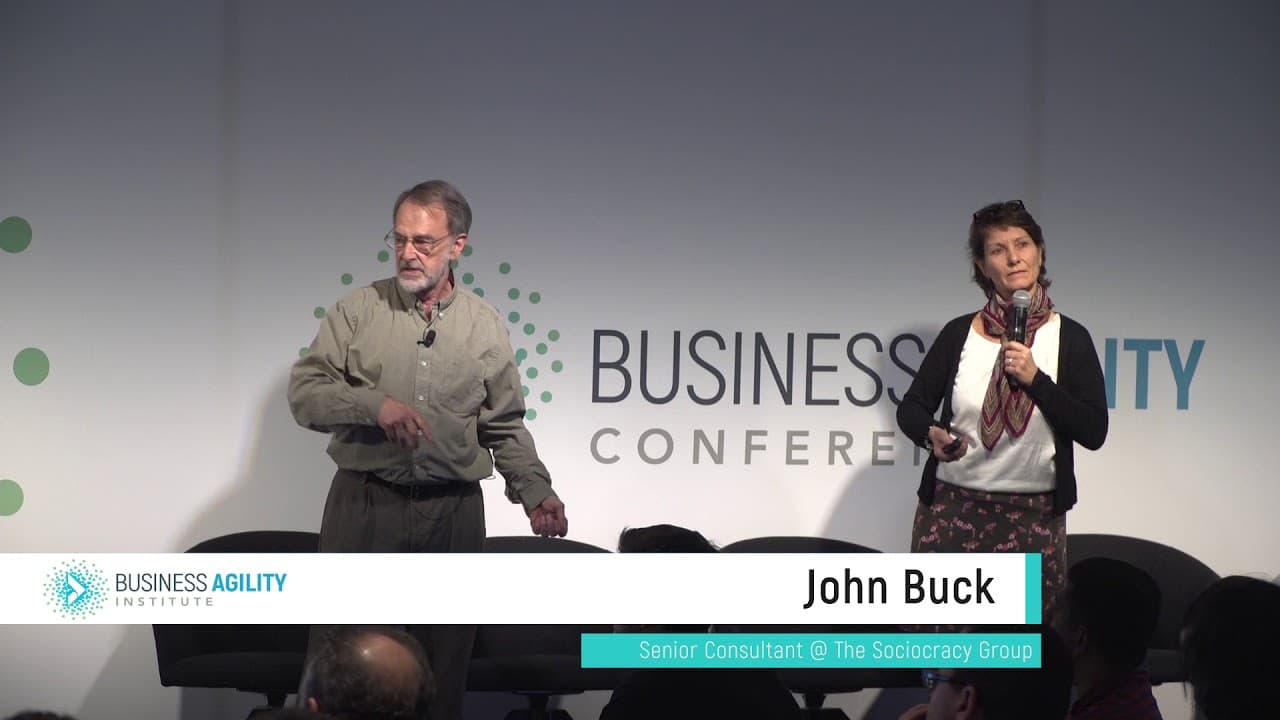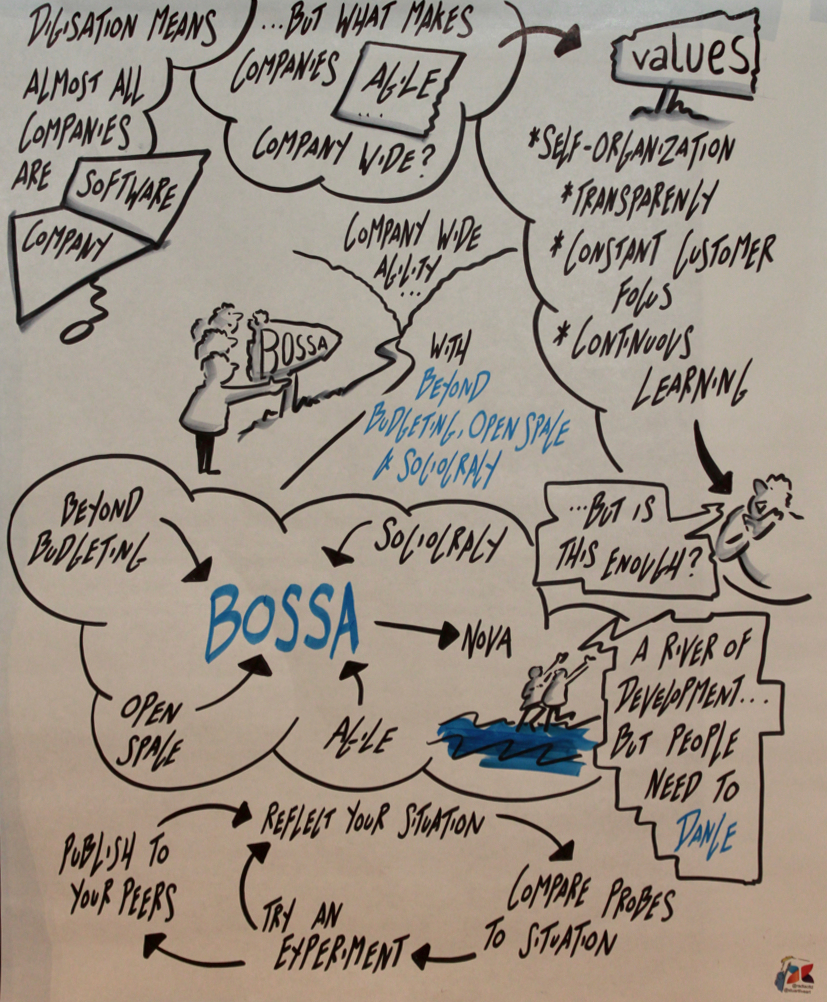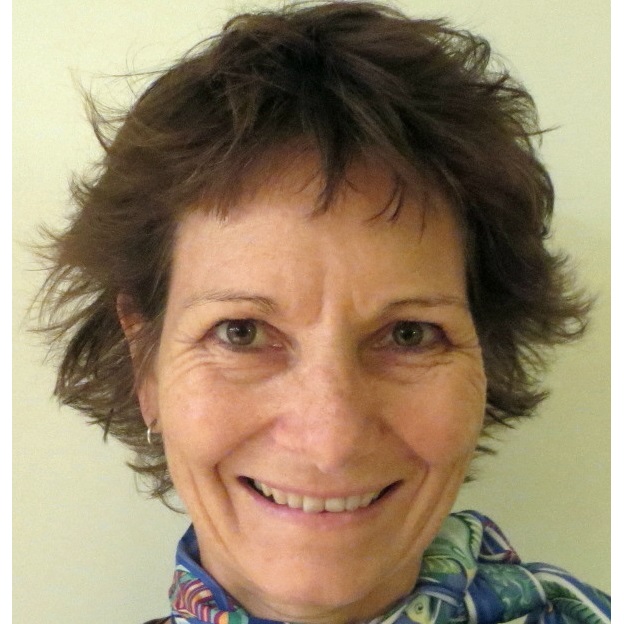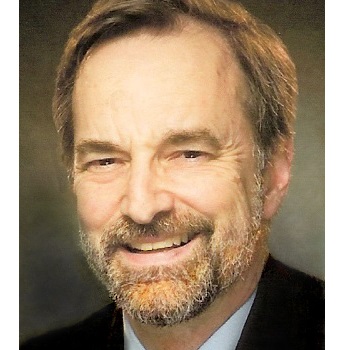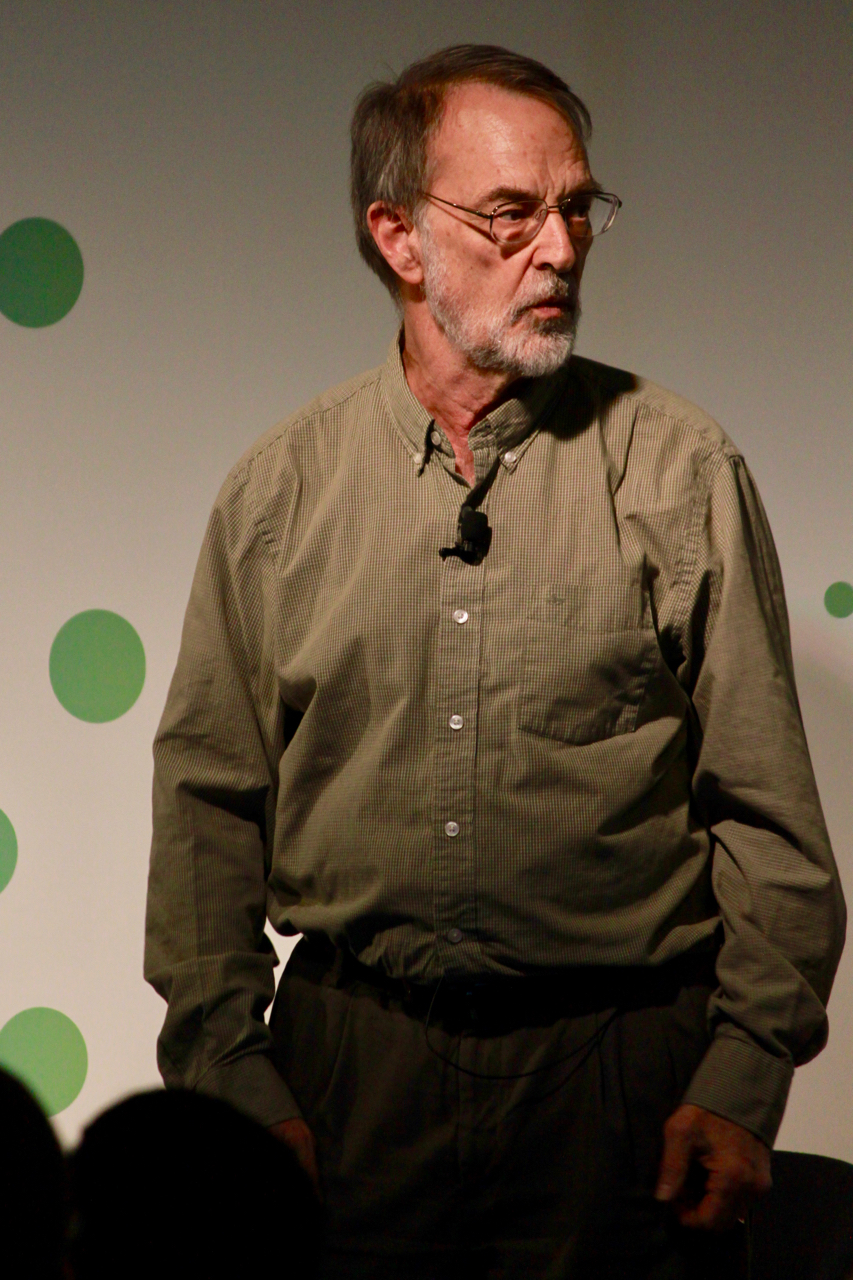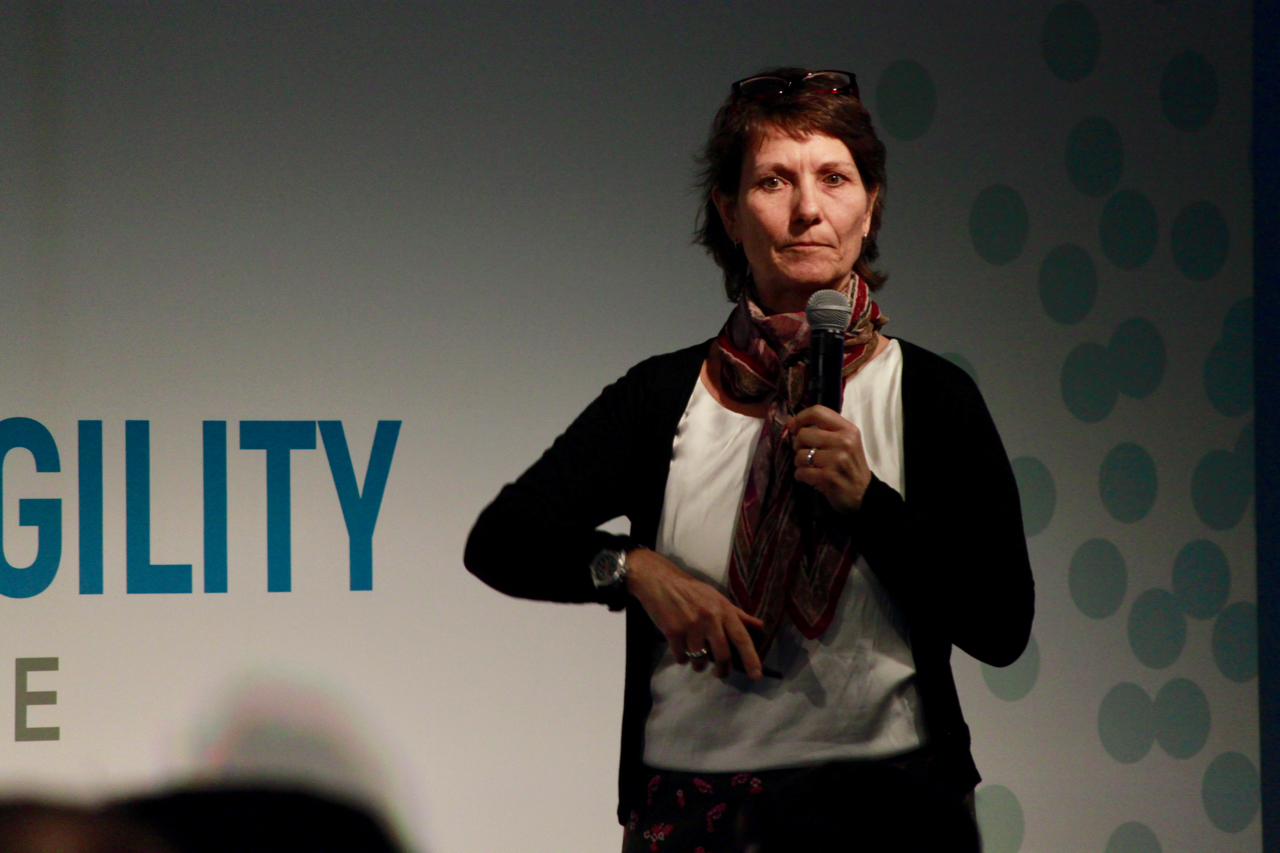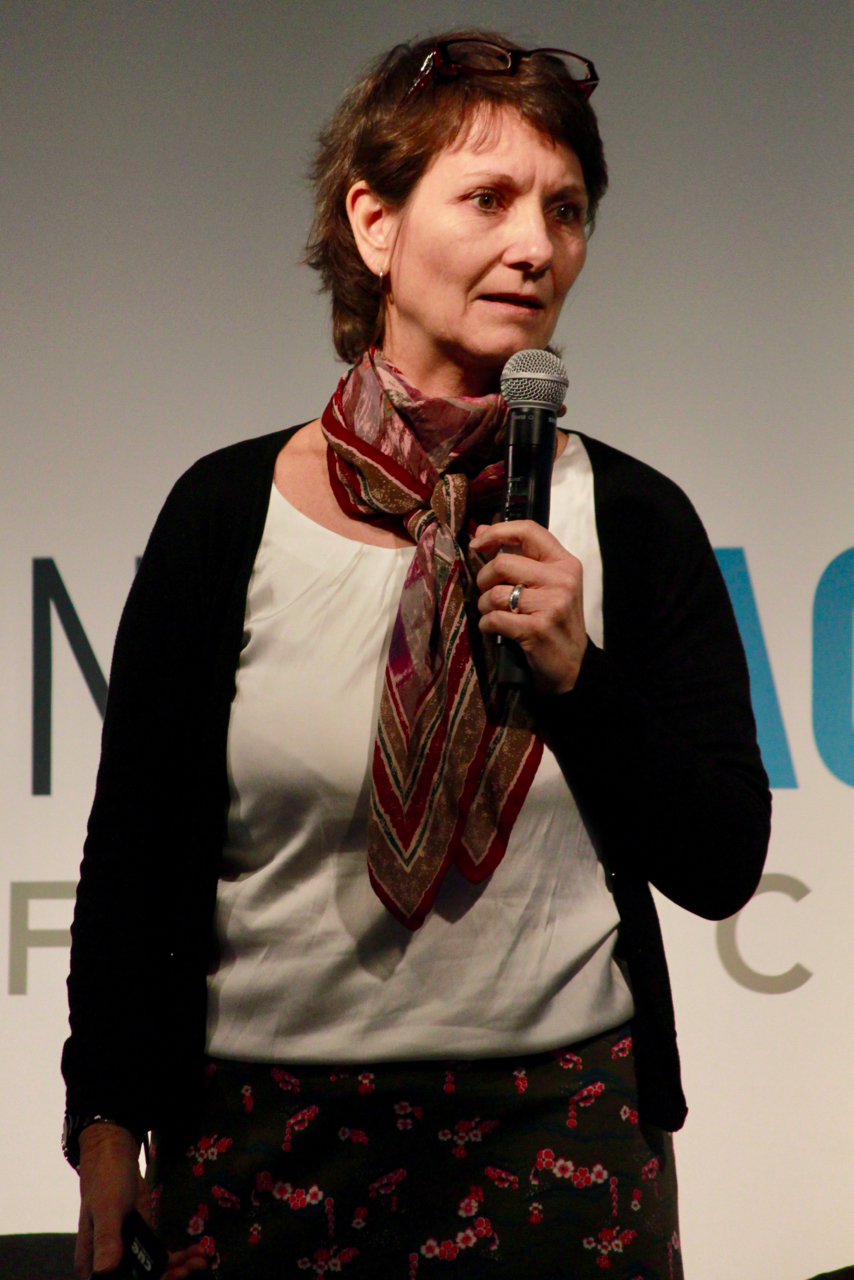This is really a challenge to speak after Jimmy, and I’m not sure how we can possibly match that, but we’ll try our best.
To be honest, I’m really surprised to be here for half a day and not see VUCA come up yet. So, it seems we are the ones who have to introduce it. VUCA means we are in a time that is volatile, uncertain, complex, and ambiguous. This is what companies are dealing with right now, and we need to find answers to address these challenges. Digitalization plays a significant role in this, as it is transforming every company into a software company, whether they realize it or not.
Because agile is a key methodology in software, people have started applying it to entire organizations. However, company-wide agility is different from simply scaling agile. The challenge is not just about making IT agile; it is about making the entire organization agile in response to VUCA and digital disruption.
Agile Values at a Company-Wide Scale
We all know the four statements from the Agile Manifesto. If you don’t, it doesn’t matter. These statements guide software agility, but when applying agility company-wide, a different approach is needed. Simply implementing Scrum or Kanban at every level of an organization doesn’t make it agile.
For example, if a boardroom conducts daily stand-ups, that doesn’t make the board agile. We need different solutions. We could take all the chairs out of the boardroom so they have to stand up—that would be agile, right? Well, maybe it opens up something for them, but that alone isn’t enough to truly implement company-wide agility.
So, we looked at the Agile Manifesto’s values and considered what they would mean at a company-wide level, universally applicable to any organization, regardless of size or industry. What we derived were four key values:
- Self-organization
- Transparency
- Constant customer focus
- Continuous learning
These four values are essential for addressing VUCA, surviving digital disruption, and achieving company-wide agility.
Finding a Theoretical Foundation
There is already a lot of literature on agility, but as we researched, we found new ideas continuously emerging. Our goal wasn’t to create an exhaustive list but to contribute to a more complete theory of company-wide agility.
One thing we deliberately avoided was focusing on specific implementations and assuming that because something worked in one company, it would work everywhere. A common example of this is the so-called "Spotify Model." In reality, Spotify itself states that no such model exists. They report on what they are doing at a given moment, but by the time their reports are published, their approach has already evolved. If you copy anything from Spotify, you need to reflect, inspect, and adapt—because continuous change is the real model, not squads and tribes.
At the same time, we didn’t want to be too abstract or philosophical. Instead, we aimed for something practical yet flexible—something in between.
The Bossa Nova Approach
We explored several established frameworks and methodologies, including:
- Agile – The tools and practices we already know.
- Beyond Budgeting – A dynamic approach to financial management.
- Sociocracy – A governance model based on structured feedback loops.
- Open Space – A way to embed innovation through invitation.
Each of these frameworks addresses different aspects of business agility. Beyond Budgeting enables financial flexibility by shifting from fixed annual budgets to dynamic resource allocation. Sociocracy institutionalizes feedback loops, ensuring all voices—including the "grumpy bastards"—are heard. Open Space fosters innovation by allowing ideas to emerge organically and gain traction through voluntary participation.
As we developed our approach, we needed a name that reflected this synthesis of ideas. We chose Bossa Nova, which translates to "new trend" or "new way." Bossa Nova is both a music style—a fusion of Samba and jazz—and an intricate dance that requires coordination and adaptability. Just as musicians and dancers influence each other in real time, agility in an organization is about moving together fluidly, responding to changes dynamically.
Rethinking the Organizational Structure
Traditional organizational structures place shareholders at the top, dictating strategy, which cascades down to production and support teams. Customer feedback, if considered at all, is often ignored due to short-term financial goals.
Business agility, however, places the customer at the center. The new structure we propose looks different:
- Self-organization – Empowering teams to take ownership of their work.
- Beyond Budgeting – Moving away from fixed annual budgets to adaptive financial planning.
- Sociocracy – Creating structured feedback loops to ensure responsiveness.
- Open Space – Encouraging innovation through voluntary participation.
How to Implement Bossa Nova
Given the complexity of organizations, there is no one-size-fits-all approach. Instead, implementation must be based on experimentation. The agile mindset encourages iterative learning, so rather than prescribing a fixed method, we advocate for continuous probing and adaptation.
One way to start is through performance evaluation experiments. If customer focus is truly at the core of business agility, performance evaluations should reflect that. To test this, divide teams into two groups: one using traditional evaluation methods and the other designing their own customer-focused evaluations. Measure the outcomes—are customers more satisfied? Are employees more engaged? If the experiment yields positive results, scale the approach further.
We have developed numerous experimental probes like this, focusing on three key areas:
- Structure – Rethinking hierarchies and decision-making processes.
- Strategy – Ensuring financial and operational flexibility.
- Processes – Embedding continuous learning and adaptation.
Final Thoughts
We are excited to introduce our new book, which was published just in time for this conference. It is available in the reading room, and we have a few copies with us. The book contains real-world examples of organizations applying Bossa Nova principles, along with expert insights from thought leaders like Diana Larsen and Jez Humble.
Our goal is to provide a supplementary framework beyond agile, synthesizing multiple streams of thought into a cohesive approach for company-wide agility. We hope this framework interests you and sparks meaningful discussions on how to navigate the VUCA world.
Thank you very much!

